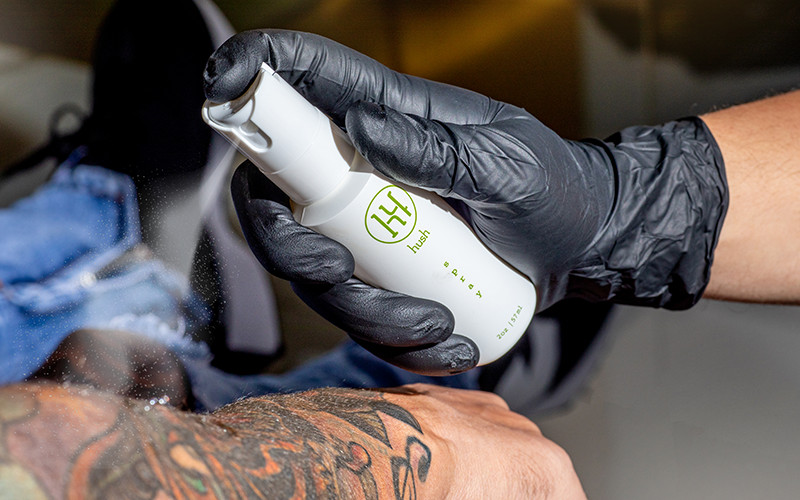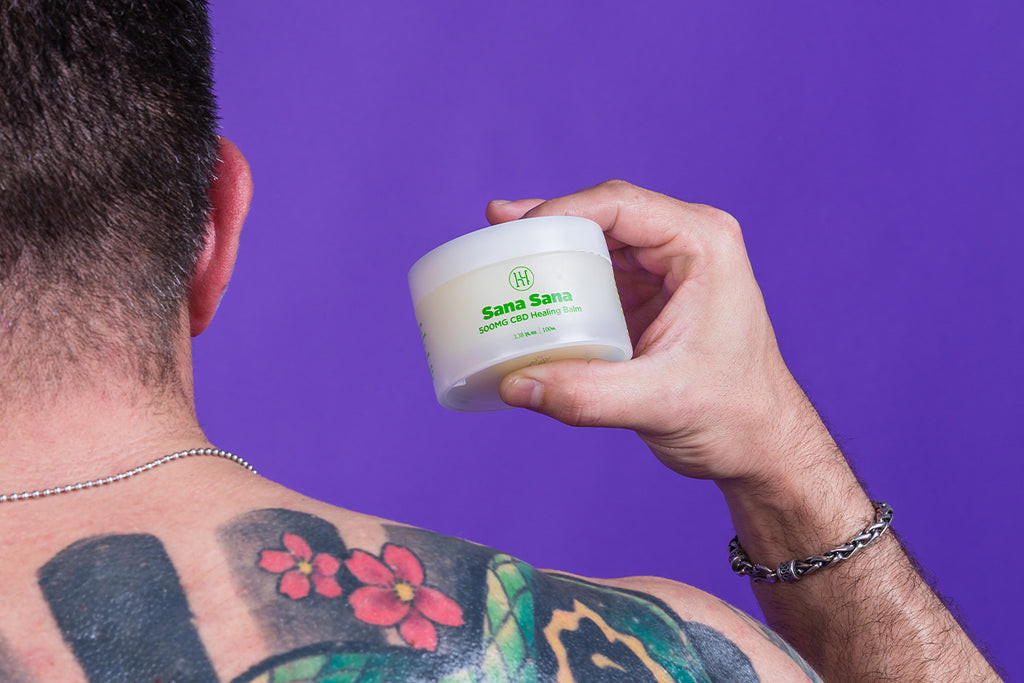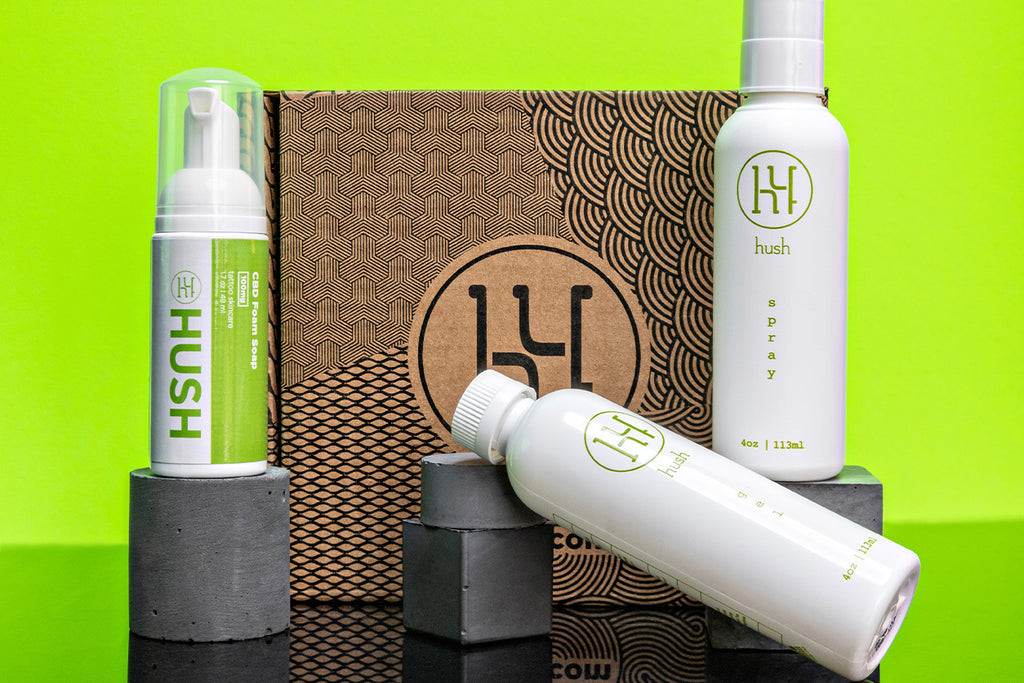Getting a new tattoo is an exciting experience, but the healing process can sometimes bring about concerns. One common phase that often worries people is the Tattoo Peeling Stage. Seeing flakes of skin coming off your fresh ink can be alarming, making you question if something is wrong. Rest assured, tattoo peeling is a normal part of the healing journey. It’s your body’s natural way of repairing the skin after the tattooing process.
Understanding what to expect during the tattoo peeling stage and how to properly care for your tattoo will ensure optimal healing and keep your artwork looking its best. This article will guide you through everything you need to know about tattoo peeling, from distinguishing normal peeling from potential issues to the best aftercare practices.
Understanding Tattoo Peeling: The Skin’s Renewal Process
Tattoo peeling is essentially your skin undergoing exfoliation as it recovers from the tattooing procedure. When a tattoo needle deposits ink, it penetrates the epidermis, the outermost layer of skin, and settles into the dermis, the layer beneath. The tattooing process creates micro-wounds, and your body initiates a healing response.
During this healing phase, the damaged epidermal cells begin to shed, making way for new, healthy skin. This shedding process is what we recognize as tattoo peeling. It’s a sign that your skin is regenerating, and it doesn’t affect the tattoo itself, as the ink is safely embedded in the deeper dermal layer.
Peeling typically commences towards the end of the first week after getting tattooed, once you’ve removed the initial bandage. You might notice your tattoo appearing less vibrant before it starts to peel. This is simply because the layer of dead skin cells sits on top of the ink. Once the peeling is complete, the tattoo’s colors will regain their vibrancy and clarity.
It’s also common to experience tattoo scabbing concurrently with peeling, often in the second week of healing. While it can be tempting to pick at scabs and peeling skin, resisting this urge is crucial for proper healing and preventing tattoo damage.
Normal vs. Abnormal Tattoo Peeling: Recognizing the Difference
Peeling is an expected part of tattoo aftercare, signaling skin regeneration. However, it’s important to differentiate between normal and abnormal peeling to ensure your tattoo heals correctly and to identify any potential complications early on.
Normal Tattoo Peeling: Signs of Healthy Healing
Normal tattoo peeling is characterized by:
- Light flaking: Resembling peeling after a mild sunburn, the skin peels in small, thin flakes.
- Timing: Typically starts around the end of the first week and lasts for about a week.
- Appearance: Flakes are thin and may contain tiny specks of colored ink, which is just stained dead skin.
- Associated symptoms: Mild itching is common, but there should be no excessive redness, swelling, or intense pain.
 Normal tattoo peeling appearance
Normal tattoo peeling appearance
Abnormal Tattoo Peeling: When to Seek Professional Advice
Abnormal tattoo peeling may indicate issues like infection or allergic reactions. Signs to watch out for include:
- Intense Peeling: Excessive peeling accompanied by significant redness and swelling.
- Pain and Heat: The tattooed area feels hot to the touch and is excessively painful.
- Discharge: Presence of pus or an unpleasant odor emanating from the tattoo.
- Thick Scabs: Formation of thick scabs that appear to be pulling away from the tattoo, rather than thin flakes.
- Systemic Symptoms: Fever or chills accompanying the peeling.
If you experience any of these signs of bad peeling, it’s crucial to consult your tattoo artist or a healthcare professional immediately. Early intervention can often prevent further complications and ensure your tattoo heals properly.
Managing Tattoo Peeling: Dos and Don’ts for Optimal Healing
While tattoo peeling is a natural process, proper aftercare during this stage is essential to protect your tattoo and promote optimal healing. Here’s what you should and shouldn’t do when your tattoo is peeling:
Dos During Tattoo Peeling Stage:
- Keep it clean: Gently wash your tattoo with mild, fragrance-free soap and water twice daily to prevent infection. Consider using a specialized tattoo foaming soap for gentle yet effective cleansing.
- Moisturize regularly: Apply a thin layer of tattoo aftercare moisturizer or balm several times a day to keep the skin hydrated and promote healing. Look for products with skin-soothing ingredients and essential vitamins.
- Stay hydrated: Drinking plenty of water helps keep your skin hydrated from the inside out, aiding the healing process.
- Wear loose clothing: Opt for loose-fitting clothes over the tattooed area to avoid friction and irritation.
- Be patient: Allow the peeling process to occur naturally without interference.
Don’ts During Tattoo Peeling Stage:
- Don’t pick or peel: Resist the urge to pick or peel off the flaking skin. This can pull out ink, leading to patchy areas and potential scarring.
- Don’t scratch: Avoid scratching your peeling tattoo, as it can cause damage and increase the risk of infection. If itching is bothersome, try gently patting the area or using a numbing spray designed for tattoo aftercare.
- Don’t over-moisturize: Applying too much moisturizer can trap moisture and hinder the healing process. A thin layer is sufficient.
- Don’t soak your tattoo: Avoid prolonged soaking in baths, swimming pools, or hot tubs until the tattoo is fully healed, as this can increase the risk of infection.
- Don’t expose to direct sunlight: Protect your peeling tattoo from direct sun exposure, as UV rays can damage the healing skin and fade the ink.
Potential Damage from Picking Peeling Tattoo Skin
Picking at your peeling tattoo can have several negative consequences, potentially compromising the appearance and health of your new ink:
- Uneven Healing: Prematurely removing peeling skin can pull out tattoo ink, resulting in uneven color distribution and patchy spots in your tattoo.
- Increased Scarring Risk: Picking can lead to the formation of thick scabs. Disturbing these scabs can cause scarring, which can permanently alter the texture and look of your tattoo. Scar tissue can even prevent future touch-ups or cover-ups in the affected area.
- Infection Risk: Your tattoo is essentially an open wound during the healing phase. Picking at peeling skin creates openings for bacteria to enter, significantly increasing the risk of tattoo infection. Infections can lead to more serious complications and potentially ruin the tattoo.
- Need for Touch-ups: Damaging your tattoo by picking may necessitate touch-up appointments to correct unevenness or faded areas. While some artists offer free touch-ups for minor issues, damage from improper aftercare usually isn’t covered, leading to additional costs.
Respecting your tattoo artist’s work and diligently following aftercare instructions, especially during the peeling stage, is crucial for preserving the integrity of your tattoo and maintaining a good relationship with your artist.
Soothing Your Tattoo During the Peeling Stage
Itchiness is a common complaint during the tattoo peeling phase. Fortunately, there are effective ways to soothe the discomfort without jeopardizing your healing tattoo:
- Moisturize: Applying a quality tattoo aftercare cream or balm can alleviate itchiness by hydrating the skin and creating a protective barrier.
- Cool Compress: A cool, damp compress can provide temporary relief from itching and inflammation.
- Numbing Spray: For immediate itch relief, consider using a tattoo numbing spray formulated with lidocaine. These sprays can also have antiseptic properties to further protect against infection. Apply as directed, avoiding overuse.
- Loose Clothing: Wearing breathable, loose clothing minimizes irritation and friction that can exacerbate itching.
Remember to always address itchiness with care and avoid scratching, which can lead to damage.
Protecting Your Tattoo Beyond the Peeling Stage
Proper aftercare extends beyond the peeling stage and is crucial for the long-term vibrancy and health of your tattoo.
- Continued Moisturizing: Even after peeling is complete, continue to moisturize your tattoo daily to keep the skin hydrated and the tattoo looking its best.
- Sun Protection: Sun exposure is a major enemy of tattoos, causing fading and damage over time. Apply a high SPF, broad-spectrum sunscreen to your tattoo every day, especially when exposed to sunlight. Consider using clothing to shield your tattoo from the sun as well.
- Gentle Skincare: Avoid harsh soaps, exfoliants, and abrasive scrubs on your tattooed skin, as these can irritate and damage the tattoo.
 Tattoo Aftercare Products
Tattoo Aftercare Products
By adopting a consistent aftercare routine, you can ensure your tattoo remains vibrant and beautiful for years to come.
Tattoo Peeling Timeline: What to Expect and When
The tattoo peeling timeline varies from person to person, influenced by factors like individual skin type, tattoo size and complexity, and aftercare practices. However, a general timeline to expect is:
- Week 1: Peeling typically begins towards the end of the first week, often accompanied by initial scabbing and itchiness.
- Week 2: Peeling and scabbing may continue into the second week, but redness should start to subside. Itching might still be present but should gradually decrease.
- Week 3-4: By the third or fourth week, peeling should significantly diminish, with only minor flaking possible. The tattoo should appear much closer to its final healed state.
Some individuals may experience minimal peeling or a delayed peeling process. This is not necessarily a cause for concern. However, if you have any worries about your tattoo healing, it’s always best to consult your tattoo artist.
Tattoo Peeling vs. Infection: Recognizing Warning Signs
Distinguishing between normal tattoo peeling and signs of infection is crucial for timely intervention. While peeling is a natural part of healing, infection requires prompt attention.
Normal Peeling:
- Light, thin flakes
- Mild itchiness
- No excessive redness or swelling
- No pus or foul odor
Infected Tattoo:
- Increased and worsening redness and swelling
- Excessive pain and tenderness
- Pus or oozing discharge
- Foul odor
- Bumps or nodules on or under the skin
- Fever or chills (systemic symptoms)
 Infected Tattoo vs. Healing Tattoo
Infected Tattoo vs. Healing Tattoo
If you suspect your tattoo is infected, seek medical advice immediately. Tattoo infections can become serious if left untreated.
Conclusion: Embrace the Peeling Process for a Beautifully Healed Tattoo
The tattoo peeling stage is a temporary but essential phase in the tattoo healing journey. By understanding what to expect, practicing diligent aftercare, and resisting the urge to interfere with the natural peeling process, you can ensure your tattoo heals beautifully and remains a source of pride for years to come. Remember to prioritize cleanliness, hydration, and protection throughout the healing process and beyond.
Sources:
- Tattoo Infection: Signs, Causes, Treatment & Prevention | Cleveland Clinic
- What To Expect When You Get a Tattoo | Cleveland Clinic
- Aftercare Instructions in the Tattoo Community: An Opportunity to Educate on Sun Protection and Increase Skin Cancer Awareness – PMC | NCBI
- What Do People Really Know About the Medical Risks of Body Ink? – PMC | NCBI
